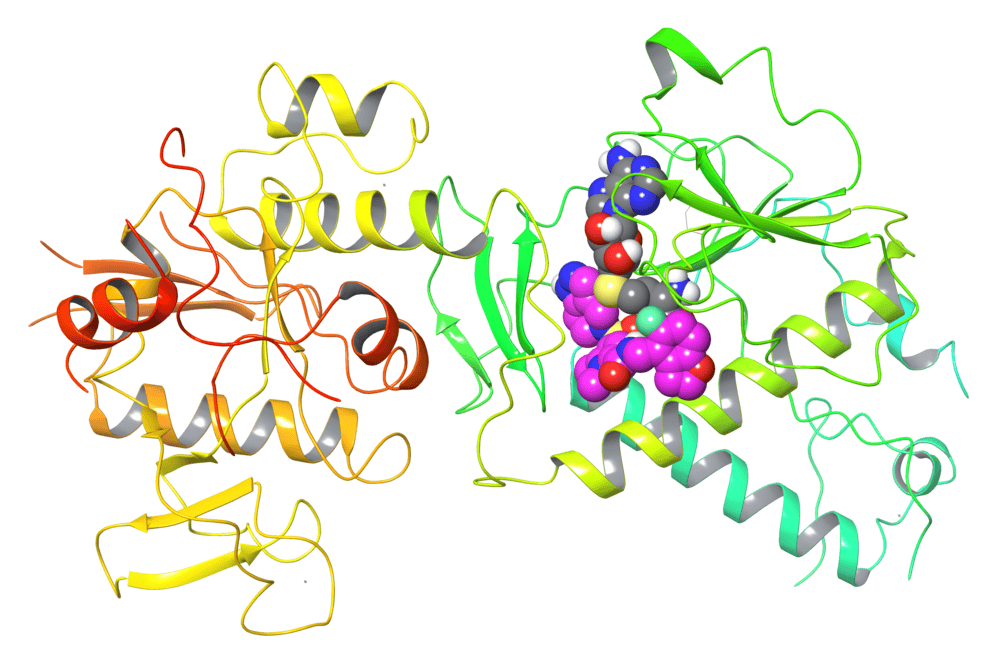Another significant turning point in the COVID-19 pandemic was the introduction of Paxlovid in December 2021. This potent antiviral has subsequently successfully treated millions of people. However, researchers are aware that Paxlovid, like many antivirals before it, would eventually lose some of its effectiveness because of drug resistance. In an effort to stay ahead of these new dangers, researchers have recently discovered a completely novel treatment for SARS-CoV-2 infections, which could have even more significant ramifications.
A proof-of-concept for a new class of antivirals is actually presented in a recent work by the Tuschl team. This class of antivirals would target an enzyme that is crucial to many RNA viruses, including as dengue and Ebola, as well as cytosolic-replicating DNA viruses, such as Pox viruses.
Their findings were published in the journal Nature.
Nobody has found a way to inhibit this enzyme before,
Our work establishes cap methyl transferase enzymes as therapeutic targets and opens the door to many more antiviral developments against pathogens that until now we’ve had only limited tools to fight.
Thomas Tuschl
Modifying their RNA caps—specialized structures that stabilize viral RNA, improve translation, and imitate host mRNA to elude immune defenses—is how a large number of RNA viruses survive. Since RNA capping depends on methyltransferases, it is an attractive target for antiviral treatments.
Because those enzymes were previously targeted and stopped viral spread, the majority of antivirals, including Paxlovid, instead target proteases, a separate class of viral enzymes that break down proteins.
Inhibiting methyltransferase required using a non-conventional RNA substrate adding a new challenge to drug to discovery.
Thomas TuschlThat wasn’t much of a problem for Tuschl, an expert in RNA whose research has already produced several RNA therapies for the treatment of genetic illnesses. And Tuschl saw the obvious benefits of going beyond protease inhibitors after reorganizing his lab during the pandemic to concentrate on antiviral medication research. Tuschl believed that a combination therapy that simultaneously targeted two unrelated viral enzymes—for example, a protease inhibitor and a methyltransferase inhibitor—would make it harder for viruses to evade treatment. He also understood that medications that target viral methyltransferase, which has a different structure from the human enzyme, will be very selective and won’t affect the activity of human enzymes.
Early in the pandemic, his team screened 430,000 compounds at the university’s Fisher Drug Discovery Resource Center in an effort to find a molecule that could inhibit the SARS-CoV-2 methyltransferase NSP14. They found a few compounds that inhibited the multifunctional enzyme with methyltransferase activity, the viral cap methyltransferase NSP14.
In collaboration with the Sanders Tri-Institutional Therapeutics Discovery Institute, those molecules underwent a rigorous chemical development process to produce optimal therapeutic candidates. Researchers headed by Charles M. Rice, chief of the Laboratory of Virology and Infectious Disease at Rockefeller, then used cell-based tests to test compounds with enhanced biochemical inhibition. The molecule was subsequently evaluated in mice under BL3 safety settings by researchers at the Center for Discovery and Innovation in New Jersey, who showed that it could cure COVID-19 just as well as Paxlovid. Additionally, Tuschl and associates showed that the therapy worked even if the virus changed in reaction to it and that it worked in concert with protease inhibitors.
In addition to confirming viral methyltransferases as a viable therapeutic target, the results imply that Tuschl’s specific inhibitor would have few adverse effects. “The drug acts through a unique mechanism,” Actually, the lab’s substance targets the virus specifically without interfering with human functions by utilizing the special structural characteristics of the viral methyltransferase, which also require the presence of the reaction product of the methyl donor SAM.
Source: The Rockefeller University
Journal Reference: Meyer, Cindy, et al. “Small-molecule Inhibition of SARS-CoV-2 NSP14 RNA Cap Methyltransferase.” Nature, 2024, pp. 1-8, DOI: https://doi.org/10.1038/s41586-024-08320-0.






